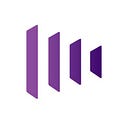The current NFT crypto-art market is still dominated by centralized institutions, such as the traditional large art institutions Christie’s, Sotheby’s, and even the newer NFT market NiftyGateway, SuperRare, etc. These centralized institutions are trying to pick up artists and NFTs with some criteria to ensure the creativity, authentication and value of NFTs. The point is that these traditional art appraisal methodologies could maintain the quality and originality of the NFTs, so that the investments of NFT collectors is guaranteed. Obviously like the traditional art industry, the existence of centralized institutions also has inherited drawbacks, such as opaque prices and difficulty for new artists’ work to enter the mainstream market. Although there are some NFT marketplaces, such as Rarible and OpenSea, are more open than others but unreasonable pricing, intellectual property or copyright abuse often occurs over there. We believe that there should be a disruptive way to build a decentralized and open NFT marketplace without the compromise on the creativity, authentication and value of NFTs. The key to build decentralized NFT crypto-art marketplace is to make appraisal of crypto-art decentralized.
Conventional art valuation is done by professional human experts or even appraisal committee. Regardless of what skeptics might think about the feasibility of price prediction, professional art appraisers must develop a pre-sale price estimate for each artwork that goes to auction. Trained in particular genres and geographical markets, appraisers take into consideration many important factors, including the artist, country of origin, age of the artwork, dimensions, rarity, signature, materials, subject, and condition. The appraiser then looks for similar items recently sold at auction and considers the current market demand. Finally, they develop both a low estimate and a high estimate, creating a range of values within which they believe the work could reasonably sell.
Various automated appraisal systems have been around for around a decade, but have enjoyed limited success. Currently, at least one major auction house is seeking to improve the use of machine learning for appraisal automation to help drive liquidity. But will these centralized auction houses really want to invent something which may turn against upon themselves? Only will they do if central banks invent Bitcoin.
Down the road, the decentralized nature of blockchain can replace the place the human appraisers. NFTMIND composite NFT Appraiser nodes as like human crypto-art appraisers conducting decentralized quantitative appraisal of crypto-art. NFTMIND Appraiser is not central AI server but Smart Contract on blockchain. The AI model on Appraisers are trained by Blockchain-based Federated Learning Framework by aggregating gradient updates submit from lower level local nodes illustrated in NFTMIND architecture diagram below.
The actual automation appraisal and price prediction of crypto-art is done by NFT Generative Adversarial Networks (NFT-GAN) embedded in Blockchain-based Federated Learning Framework (BFLF). BFLF is a decentralized federated learning framework. In the original federated learning settings, one centralized server takes control of the training process, including client management, global model maintenance, and gradient aggregation. During each training round, the server broadcasts the current model to some participating nodes. After receiving the model, nodes locally update it with their local data and submit the update gradients to the server. The server then aggregates and applies the local gradients into the model for the next round. BFLF replaced the centralized federated learning server with Smart Contract (SC) instead, and be actuated by transactions on the blockchain. The participating nodes perform federated learning via blockchain, which maintains the global models and local updates.
NFT-GAN has two sub networks, a generator and a discriminator. The discriminator has access to a set of crypto-art images (training crypto-art images). The discriminator tries to discriminate between “real” crypto-art (from the training set) and “fake” crypto-art generated by the generator.
The training model is composed of two neural networks: the generator G and the discriminator D. The smart contract of NFT Appraiser orchestrates the communication load by selecting which devices should contribute to updating the model at a given round. The NFT Appraiser is also in charge of aggregating the computation from devices to update the global model. Each group of local iterations (on devices), ending with a global model update, is called a federated learning round (or simply round). On top of this, training and system specifics are designed to reach scalability and resilience goals.
The NFT crypto-art generated by AI is treated with fair value identification. NFTMIND holds a completely fair attitude towards AI and humans in NFT artistic creation, which is also one of the best practices of blockchain decentralization. NFTMIND Master is an AI NFT Creator. It uses the computing power of NFTMIND Chain to carry out NFT crypto-art “creation”. The produced crypto-art will then be appraised by NFTMIND and transferred to marketplace. If an NFT is sold the AI or its human owner earn the tokens.
In order to verify and promote NFTMIND, a value evaluation and trading marketplace will be online soon in the first phase.
